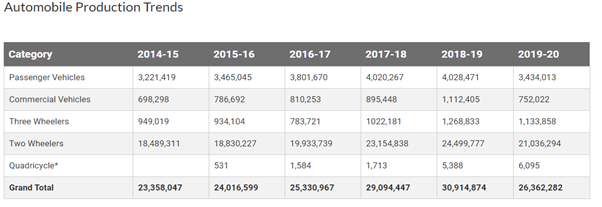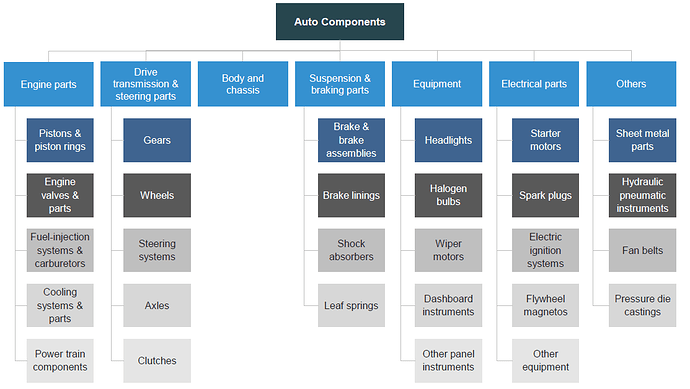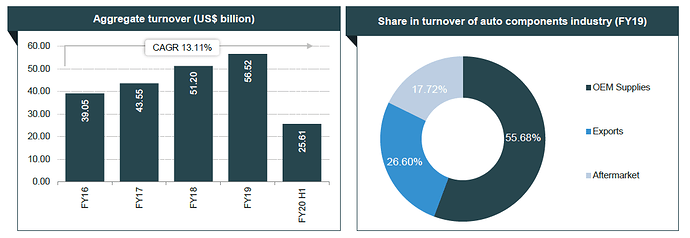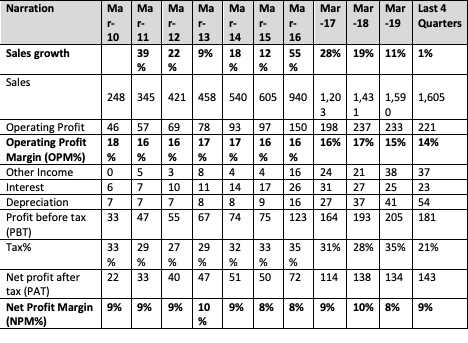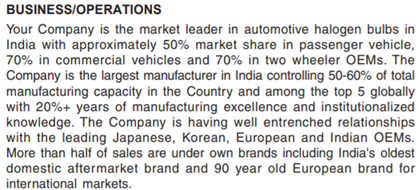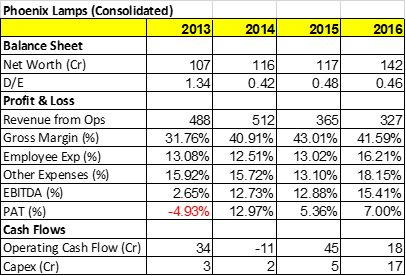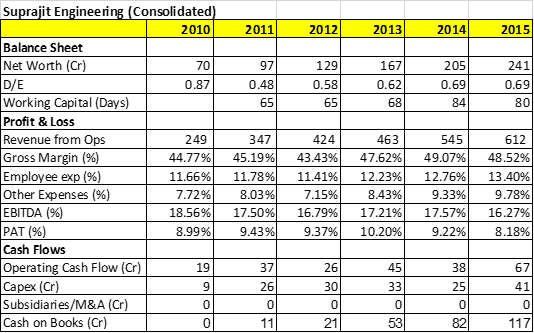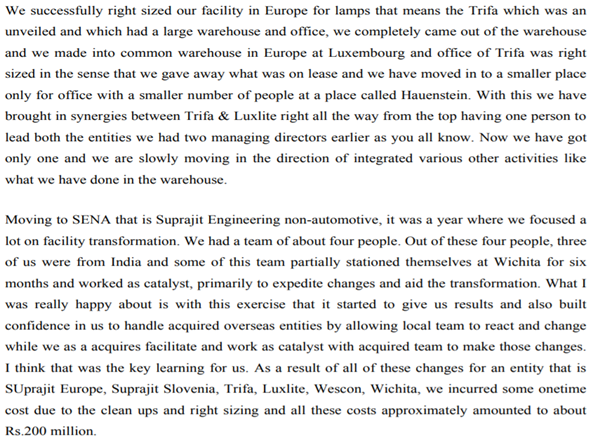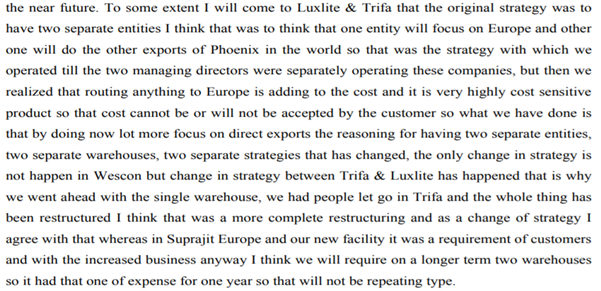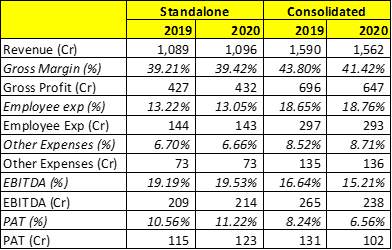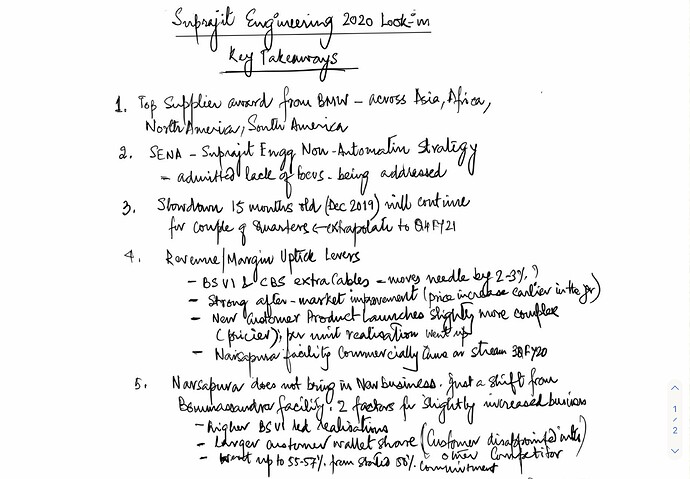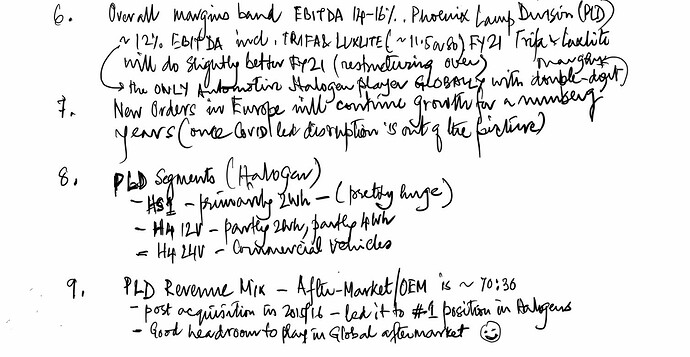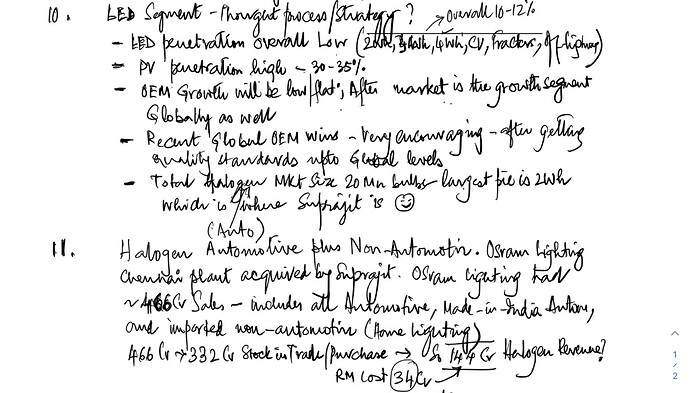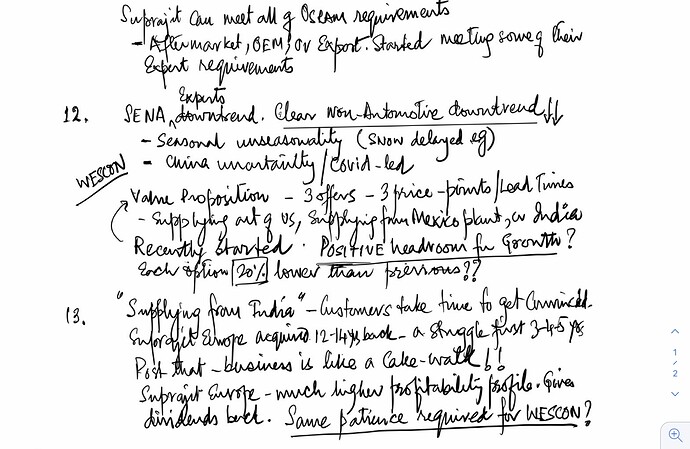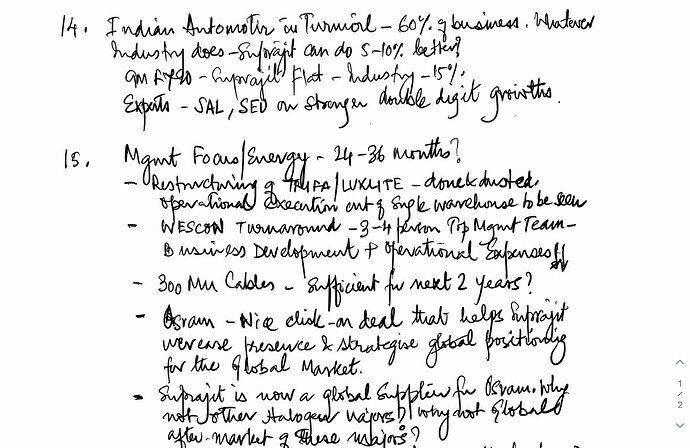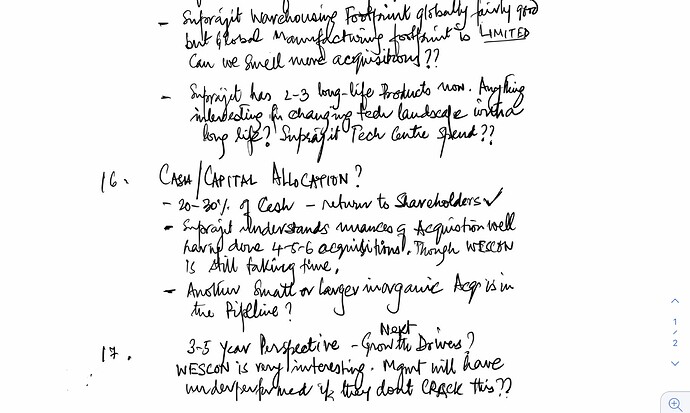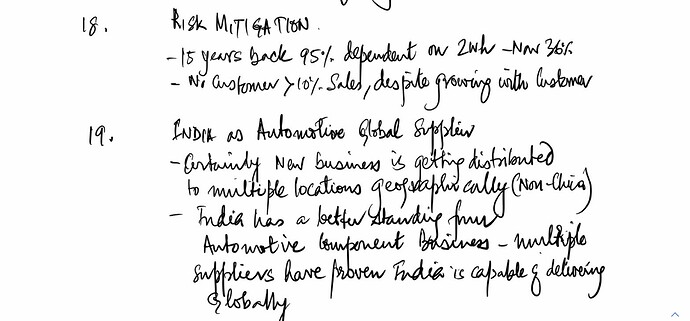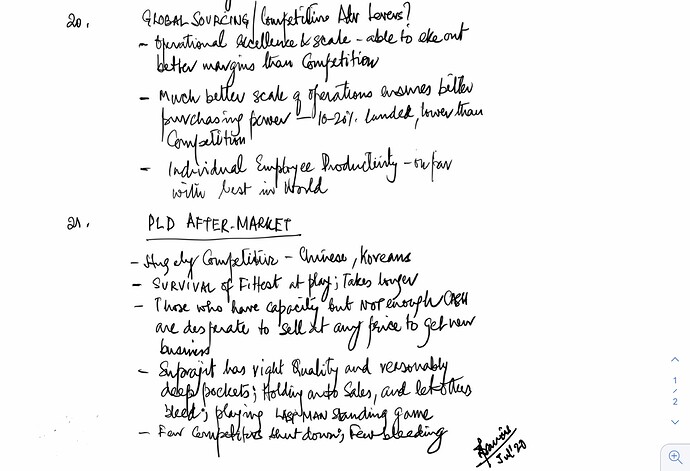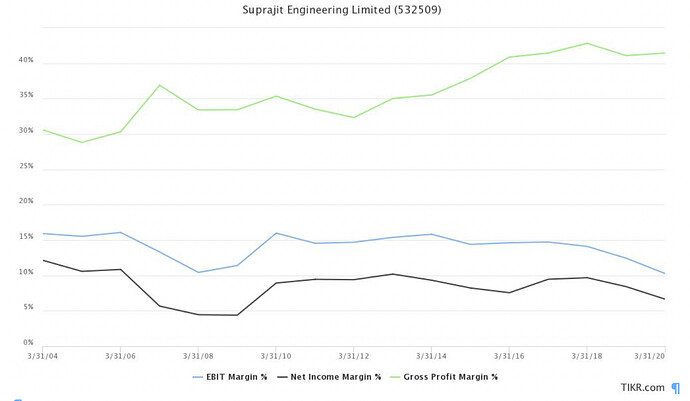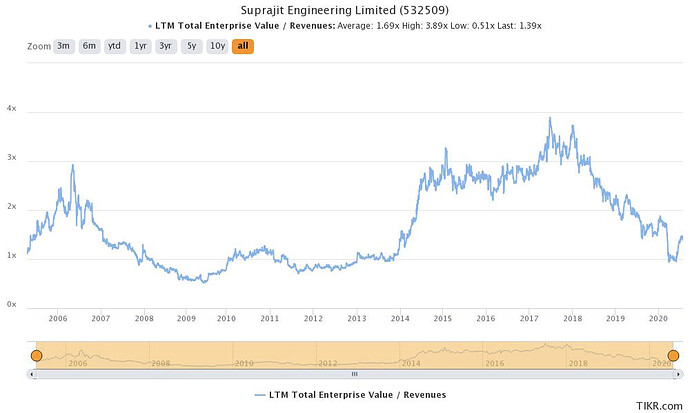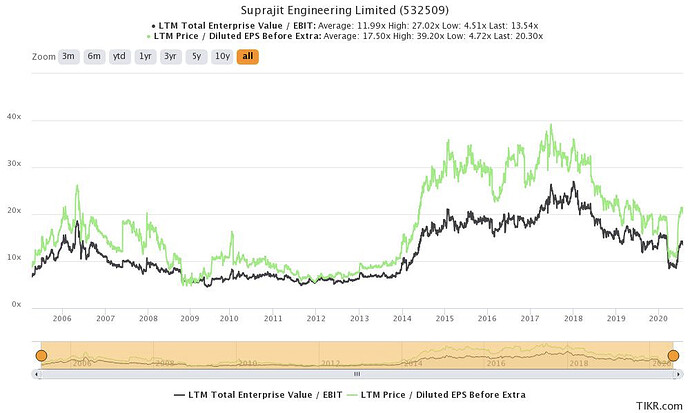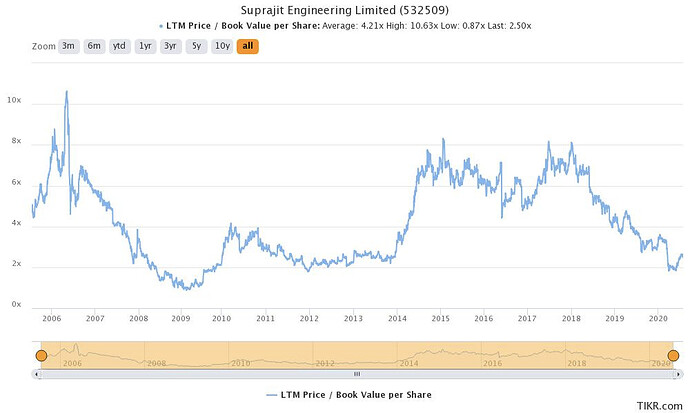Scuttlebutt - following is a series of Q&A done with 2W industry sources
Q: I read a few news articles, particularly with HMSI saying that they’re fine right now for June sales, but post June they think there’ll be huge supply shocks that might come from tier two tier three suppliers who don’t have enough cash and don’t have strong reserves. What actually is the scenario like?
A: With respect to the cash problem, the problem is universal not just with tier two or tier three, even tier one suppliers are facing cash issues as business has been affected with no business or revenue for several months due to the lockdown in the first quarter. Unfortunately for us, with BS VI implementation, ancillary units had undertaken quite a bit of capacity expansion as well since the last quarter of last financial year. With peak production for most of these capacities happening in February and March, this inventory is basically money that has been blocked which hasn’t converted into sales yet.
However, for us, this particular issue has not resulted in any supply shortage. Considering, we have also been among the first OEMs to release timely payments to our suppliers have definitely helped vendors. But yes, there has been a cash crunch issue with these units but till now, no supply shortages.
Q: Do you think it’s just a cash crunch issue or is it also that the suppliers are facing labor shortages as well?
A: Labour shortage has been a major concern which is again universal to suppliers across the value chain. We engaged with all the suppliers ensuring that we monitored the health of those workers along with protocols in place so that production can be started immediately without facing issues. But subsequently in second and third weeks of May, with different governments deciding that the migration of labour can take place and the labourers can go back to their natives, there was a substantial drop of labour availability. But since then the situation is slowly improving. The other factors are also in play as certain societies where the labour lives, if affected by covid affects their movement.
Q: How are we supporting the tier 2 tier 3 players to get through this issue?
A: First of all, we have been working on guidelines, protocols and putting in checklists in place and arranging for protective and sanitization equipment centrally for all our suppliers so that they are equipped and ready to handle this environment. As far as labour problems are concerned, we help them with identifying labour contractors and helping them bridge the gap.
As far as financial support, directly we are not providing financial assistance to tier 2 or 3 suppliers. However, on tier 1 we have been giving support based on the need and some other guidelines that we have prepared. When we talk about suppliers, we mainly bifurcate into two - proprietary and non-proprietary. When we talk about proprietary players like Lumax, Minda, Bosch, etc who have their own designs and are big players supporting the entire industry - we don’t provide any direct support as these are big players and can manage on their own. Giving timely release of payments is the support which is always given.
Whereas for non-proprietary vendors, who have more dependency on our OEM and have higher material content as part of their pricing, those people involved in forging, casting, sheet metal, etc these kind of people based on their request we are offering them bill discounting or cash discounting facilities which is lower than our regular norms and is offered as additional support, For example, some of the players have put a lot of investment for BS VI but business volumes haven’t supported that, for these people we have been offering the financial support.
Q: Which are the linkages that are the weakest in terms of potential shortages that can arise? Which components are likely to face supply shocks?
A: More than the components affected, the biggest factor in causing the shortages is that of local government state policy which is giving a lot of shocks to most supply chains now. For example, when there was a surge in cases in Ahmedabad, the local govt decided to have a lockdown, so the suppliers supplying from there got disturbed and supply chains got affected. We have also heard that when TN govt announced lockdown in Chennai, suppliers of electronic carburetors from there got disrupted. And same govt announced lockdown in Madurai, so supplies of ores got affected then. So these kind of issues have created a bigger challenge today for most supply chains. So while big chunk of the production might be localized near the plants, some of the parts have to be sourced from outside like with tyres, carburetors, orings, belts, etc which gets manufactured at one location and then gets supplied to various OEMs those are susceptible to supply shocks based on the local conditions.
Q: Because of this corona situation, do we see a scenario emerging where stronger players who are bigger and are in a better position financially begin to get disproportionate share of future business? Either because they can ramp up production quicker or because they are situated in lesser affected areas? Do we see a movement of business towards them?
A: Obviously, this cannot happen for most of proprietary suppliers for various reasons. However, this puts up a challenge to all of us that taking this covid case we are forced to assess each supplier on the basis of their financial health and capabilities; so the weaker players may not get that much opportunities in the future going ahead. Smaller players still have their utility and niche in the supply chain, so unlikely that business will move from smaller players to larger players. But within the smaller players, it’s likely that business will move to the ones who are financially more strong. It gives OEMs an opportunity to relook at the supply chain, so that during the next strategy discussion when we plan the next volume jump or when we put up a new plant, during those cycles, preference will be given to these suppliers.
Q: In the cables space in particular, how many suppliers does an OEM typically have? What are the factors in choosing the suppliers?
A: Generally, the industry works with two or three suppliers. The factors are typically capability in terms of consistent quality performer, cost competitive, and fast response times for development. For example, Suprajit has been a preferred source. So whenever we moved to a new plant, we have given that business to Suprajit and Suprajit puts up a plant wherever our plant is. So automatically, locational advantage is there for both.
Q: With EV coming in, are there risk factors to the cable industry? Or is the cable industry relatively not affected by the transition to EV?
A: With EVs, the number of cables will reduce. Even though it may not become zero, but the number will be lesser. There may not be a throttle cable, clutch cable, etc as it will be driven by sensors. In a normal bike, if there are 4-6 cables, in an EV there may be 1-2 max. So to that extent the business will drop, so that risk is there.
Q: How do you see the transition from halogen lamps to LEDs even in mass premium vehicles? Do you see this extending to lower and middle priced bikes as well?
A: Yes, the transition is happening. The challenge is going to be in terms of pricing. Now the blinkers, speedometers, tail lamps etc have mostly moved to LEDs. Whereas halogen lamps are mostly used in head lamps. Head lamps LED introduction will mostly depend on how the costs will improve. At the moment, some of the people have gone for LED but halogen lamps are still used but as the volumes go up and the technology improves the LED prices will drop further and then it could become mainstream in the next 2-3 years in my view.
Q: How do you see the gears used in Internal Combustion Engine vehicles? How different is it from the gears that are to be used in EV?
A: There is a reduction in requirement. As we see in EV, most affected would be the engine part manufacturers and to some extent, it will affect the transmission parts makers. Whereas chassis side, vehicle side people will still continue unaffected. And obviously the electrical parts makers like sensors will improve the share of business going forward.
Q: For a company making parts like shunt resistors for EVs, how difficult is it for a small company as a Tier 3 supplier to get registered with an OEM? Is this particular supply disruption going to make entry a little easier for some of the smaller companies?
A: The electronics and semiconductor makers are in demand as their share of content in the vehicles have been going up across the vehicle classes. Irrespective of ICE or EV. A couple of years before actually there had been a substantial capacity shortfall in the entire industry and demand went up like crazy along with a capacity crunch. And this is in a high investment, high technology industry. So investments happen at certain intervals and at certain slabs, which has opened the doors for various makers. For example, Vishay wasn’t a supplier for us. But that scenario opened up an opportunity for Vishay to become a Tier 1 supplier for us. Now, one is capacity shortfall and second with demand increase, it’s an opportunity for the newer players to get an entry.
Additional Observations:
Levers that got disrupted:
Two of the biggest disruptions for OEMs due to Covid was in the form of retail finance and outdoor activations, Retail financed vehicles accounts for nearly 70% of overall vehicles sold. Post the corona situation, the lending norms have been tightened. The LTVs have dropped across all financiers and the down payment requirements have gone up. In cases where a leading NBFC, was financing No Income Proof cases with 85% LTV, that has now dropped to 65% LTV. Some other smaller NBFCs have stopped disbursements in select places and have been focussed only on collections. The people who have not been largely affected and haven’t dropped their LTV and have in fact increased their disbursements are HDFC but they have very strict profiling criteria. Overall, these issues have lead to the overall contribution of retail finance to drop to 50-55% in most places leading to volume loss as people postpone the purchase decision due to the high down payment required now.
Second lever that got disrupted was outdoor activations. Basically, dealerships used to do Loan melas and Exchange melas in mandaps and venues once or twice a month and they used to be big drivers for enquiry generation and retail sales. These activities used to account for 15-20% of the retail sales. But the current scenario has virtually put an end to outdoor activations and has dried up this segment for retails and made OEMs dependent only on walk-ins.
Impact of these two levers: Outdoor activations was an important lever to be used in places where the dealer network is not present and these activities used to contribute 15% of volumes which have become nil now. However, 1/3rd of those volumes possibly could be recovered through alternate actions like digital ads, etc. which many dealerships have started deploying post Covid. Retail finance dropping from 70% to 50-55% contribution has been contributing at least 10% potential drop in volumes as more and more people have been postponing the purchase decision.
